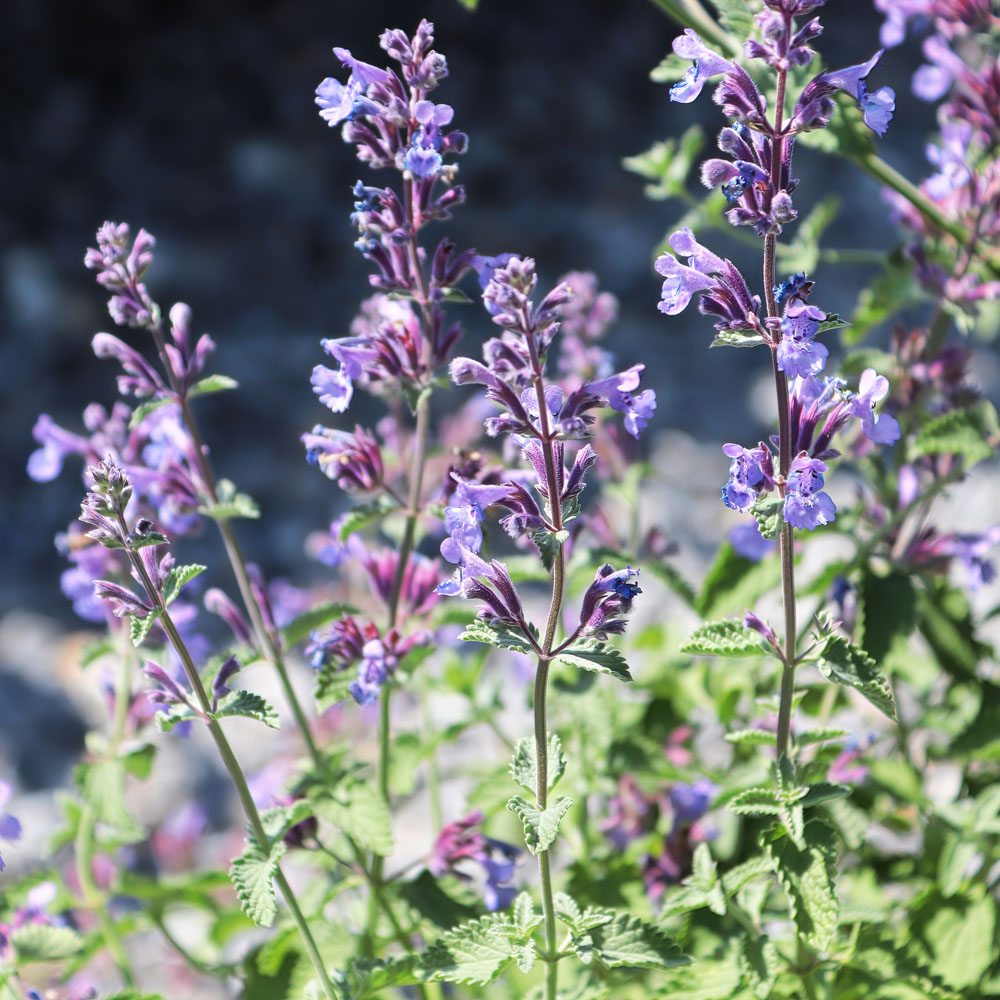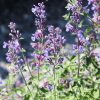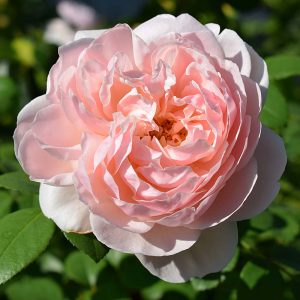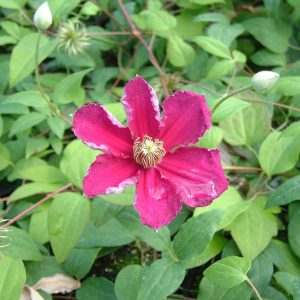Description
Nepeta mussinii, commonly known as Catmint, is a low-growing, spreading herbaceous perennial that grows up to 30 cm tall and 60 cm wide. It has slender, gray-green leaves with a fragrant aroma when crushed. From late spring to early autumn, this plant produces clusters of small, trumpet-shaped, lavender-blue flowers with purple calyxes that are highly attractive to bees and butterflies. Its long flowering period and easy-to-grow nature make it a popular choice for garden borders, rock gardens, and as a ground cover. It prefers full sun and well-drained soil, but can tolerate light shade and poor soils. Pair it with other sun-loving perennials such as Echinacea, Salvia, and Rudbeckia for a stunning summer display.
Key Facts
- Common Name(s):Catmint
- Hardiness:Fully hardy
- How big will I get? Nepeta mussinii can grow to a height of 0.3m and a spread of 0.6m.
- Did You Know That:Nepetalactone is the chemical in Nepeta that attracts cats?
Plant Calendar
A rough guide to how this plant will change through the year.
| Jan | Feb | Mar | Apr | May | June | July | Aug | Sept | Oct | Nov | Dec | |
| Flowering Time |  |
 |
 |
 |
||||||||
| Foliage Colour |   |
  |
  |
  |
  |
  |
  |
  |
  |
| J | F | M | A | M | J | J | A | S | O | N | D |
 |
 |
 |
 |
||||||||
  |
  |
  |
  |
  |
  |
  |
  |
  |
Care Guide

Soil Requirements
Nepeta mussinii prefers soil with good drainage and does not tolerate standing water. This plant can grow in soil with a wide range of pH levels, it is not picky about the pH level of the soil.

Best Position
Nepeta mussinii can handle either an exposed or a sheltered position and can cope with either full sun or partial shade.

Maintenance
Nepeta mussinii should be trimmed once the plant has finished flowering in early Autumn. This will keep the plant nice and compact. Not totally necessary however you could end up with some woody growth with no flowers around the base of the plant if you neglect this.

Pest, Diseases and Wildlife
Nepeta mussinii can have problems with leafhoppers, it can be vulnerable to certain diseases such as powdery mildews. It is also known to attract bees, butterflies and other pollinators. It is not considered to be toxic.





